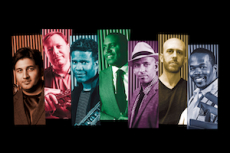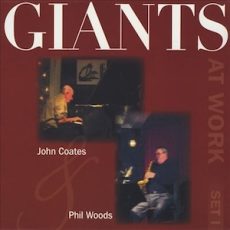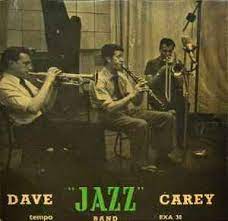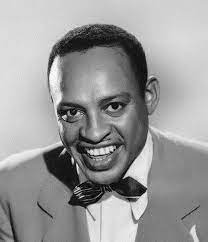
SFJAZZ COLLECTIVE
Founded by SFJAZZ in 2004, the SFJAZZ Collective is an all-star ensemble and composer’s workshop that represents what’s happening now in jazz, celebrating its 20th Anniversary in 2024.
Since the beginning, the Collective’s mission has been to perform newly commissioned pieces by each member and fresh arrangements of works by modern masters. Through this pioneering approach, simultaneously honoring music’s greatest figures while championing jazz’s up-to-the-minute directions, the SFJAZZ Collective embodies SFJAZZ’s commitment to jazz as a living, ever-relevant art form.
To celebrate two decades as a working ensemble, the supergroup will perform a landmark Anniversary program that both honors the history of the group and looks ahead to its future. In tribute to the artists who have been honored by the Collective over its 20-year history, as well as the world-class composers who have been a part of the ensemble, the band will revisit past original compositions and arrangements from its innovative repertoire, updated and re-imagined by this singular lineup of jazz masters. Additionally, the band will emphasize the spirit of its name by collectively composing a new suite dedicated to and inspired by the history of the ensemble.
Chris Potter ~ music director & saxophone
David Sánchez ~ saxophone
Mike Rodriguez ~ trumpet
Warren Wolf ~ vibraphone
Edward Simon ~ piano
Matt Brewer ~ bass
Kendrick Scott ~ drum
Streaming: $15.00 + fees
Saturday Showtimes:
Sunday Showtimes:
More Posts: adventure,bass,club,drums,genius,jazz,music,piano,preserving,saxophone,travel,trumpet,vibraphone

Daily Dose Of Jazz…
John Francis Coates Jr. was born February 17, 1938 in Trenton, New Jersey to a full-time performing musician and bandleader father, and his mother a dancer and actress. He attended Ewing High School and began his formal study in New York City at age eight with Urana Clarke at the Mannes College of Music on full scholarship. His earliest influences were credited to listening to Symphony Sid on his AM radio.
From age 11 to 14 he played clarinet with his father at the Trenton YMCA dance hall night, where he learned to improvise. His father began teaching him jazz piano at twelve and influenced by Jack Weig he joined the Trenton musicians union the same year. By 14 he was playing gigs two nights a week, as well as weekends and at sixteen he was gigging six nights a week during the summer at the Deer Head Inn where Savoy Records discovered him.
He recorded his debut Savoy album, Portrait, with bassist Wendell Marshall and drummer Kenny Clarke during his senior year of high school. He performed on the Steve Allen, Mike Douglas, and Merv Griffin tv shows in support of that album. From 1956 to 1958 he toured with Charlie Ventura, then while in college John played with Barry Miles, Eddie Gomez, Ron Carter, Woody Shaw, Harry Leahey, Al Cohn, Zoot Sims, Kai Winding, Urbie Green, and Pepper Adams.
Attending Rutgers University he graduated with a degree in romance languages in 1962. After graduating Coates returned to Deer Head where he again played six nights a week, four alone and two as bandleader. He took a position with Shawnee Press as an arranger and editor. He began performing at Henderson’s Club 50, where he had a six night per week gig and played with Coleman Hawkins, Clark Terry, Doc Severinsen, Phil Woods, Marvin Stamm and Bill Watrous among others.
Moving to Mountain Lake, New Jersey in 1966 and began working as an editor at Shawnee Press, arranged on his own time on a royalty basis, and playing at the Deer Head year round where he became an early inspiration for Keith Jarrett, who would listen and sit in occasionally. His arrangement for Amazing Grace has sold more than 750,000 copies and remains one of the publishing company’s best sellers.
John recorded nine albums for the record label Omnisound, toured briefly with bassist Paul Langosch, then began recording for Pacific St Records, including two albums with Phil Woods. In the 1990s, he became homeless and attempted suicide, then moved to Coney Island and began playing again around the year 2000.
Pianist, composer and arranger John C. Coates Jr., who occasionally played vibraphone and clarinet, died on November 22, 2017.
More Posts: arranger,composer,history,instrumental,jazz,music,piano,vibraphone

JASON MARSALIS VIBES QUARTET
Jason Marsalis is the youngest son of piano patriarch and jazz luminary Ellis Marsalis Jr. and their famous New Orleans music family, declared “America’s First Family of Jazz” upon the presentation of their NEA Jazz Masters Award in 2011, the nation’s highest jazz honor. In addition to his renown as a drummer, Jason is also a respected vibraphonist whose 2018 release “Melody Reimagined” with his 21st Century Trad Jazz Band rose swiftly to the top of the Billboard jazz chart. With a fire in his heart and a passion for the music, his will to swing has never been more resolute. The maturity and the command Jason possesses over his music is clearly evident to those who have heard or seen him.
More Posts: adventure,club,genius,jazz,music,preserving,travel,vibraphone

Daily Dose Of Jazz…
David Arthur Carey was born November 8, 1914 in Coulsdon, Surrey, England. His father was a pianist. In the early Thirties he had his own band that performed in the Croydon borough of London. After the start of World War II he opened a music shop in Streatham before being drafted into military service. In 1946 he opened The Swing Shop in Streatham, where he sold musical instruments and records and which he expanded into a mail order business.
He also played in dance and jazz bands in 1947 with Rex Stewart, who was visiting England, with whom he also recorded in London in September 1949, and in 1948 with Graeme Bell’s Australian Jazz Band. In the same year, Carey took part in recordings by Humphrey Lyttelton for Wilco, in 1950 with the boogie-woogie pianist Roy Vaughan. He was in Lyttleton’s band for a year in 1948 until he was replaced by Bernard Saward. The mid-1950s Dave led his own traditional jazz formations and recorded a number of records for Tempo Records and Decca Records.
Carey performed at the Royal Festival Hall in 1957 and contributed to pianist Pat Hawes’ recordings for Tempo. He worked as a music historian, collaborating with Albert McCarthy and the six-volume work Jazz Directory spanning 1949 to 1952. In the Sixties he led his own band in the 1960s.
According to his colleague Pat Hawes, his drumming was influenced by Baby Dodds, but also by drummers of the swing era such as Gene Krupa, Cozy Cole and George Wettling.
Drummer, bandleader and jazz researcher Dave Carey, who also plays vibraphone and washboard, transitioned on July 18 , 1999 in Croydon.
More Posts: bandleader,drums,history,instrumental,jazz,music,researcher,vibraphone

Three Wishes
Pannonica finally got the opportunity to ask Lionel Hampton what he would wish for and his retort was:
-
- “To be in tune with jazz. Jazz to me is like the human emotion of the Negro. From the time he was in bondage praying to God to give him freedom – that was the blues then, coming from the spiritual vein – and when he was freed some, he would make jazz more happy. It was coming from the Negroes. From the time of the slave in the cotton fields, swinging up, you dig? From the time it got popularized and commercial, and left the cotton fields and railroad tracks, and they were putting it in the cafes. It was the days of King Oliver and Sidney Bechet..”
- “The colored man always has been the one to change the color of jazz. As the country advanced, they changes the music. It’s always been moving along, integrated by Negroes, turning to his feelings as he advanced. From Louis Armstrong up to Fletcher Henderson, Don Redman, Edgar Sampson, and Sy Oliver. They started changing the picture of jaz. It was their orchestrations, their chart that made jazz. They began writing arrangements for Benny Goodman, Tommy Dorsey, and so on – for the ofay bands. fats Waller, Jimmie Lunceford, those guys were all great arrangers. Then Monk, Dizzy, Prez, Don Byas, and Charlie Parker, they came in, all influencing the music, all great instrumentalists. As the Negro got free he added more ingredients. You’d need an encyclopedia to tell it all. I hope I’ll always be tuned so I can dig the transitions in jazz. Because there are more transitions coming.”
- “Lots of white folks write about jazz, but they don’t know the pains of it. You should be the one to write about it, because you understand. And musicians will talk to you. Gotta get down on that stand now, but I’ll be over to your pad tomorrow, and we’ll do this with the tape recorder. It’ll take another three of four hours, at the very least. I’ve not done more than get started on the first answer yet, you dig?”
More Posts: bandleader,baroness,history,instrumental,jazz,music,pannonica,percussion,piano,three,vibraphone,wishes




